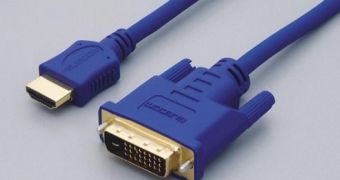One of the good things about the 21st century is that we have Internet access, I mean, not all the people in the world have Internet access, that's why AMD has the 50x15 program up and running but there still a fair amount of people that do have Internet access and it has become a part of our, let' say culture. When DARPA funded the project decades ago, they didn't know to what a big level all of this will rise and how soon and how fast the trend would be accepted and the number of followers that it would take along the way.
But nowadays things have taken an interesting path, if years ago you got picked on for having ragged shoes and old "out of fashion" clothing, now people pick on you for not having the latest pimped out mobile phone, a cool sports car, you "live in the middle ages" if you don't have Internet access, and so on. So the thing is if you want to keep up, you must be sharp, and such is the case with Luxtera Inc. a company that has worked along side the Video Electronics Standards Association (VESA) to aid in the removal of copper cables in the DisplayPort standard, changing them with fiber optic cables.
The fiber optic cable is the main choice for high speed Internet connections and the primary material used for country to country or continent to continent Internet connections. By moving the connection type from copper to fiber optics it will allow the DisplayPort to achieve higher bandwidths which are necessary for HDTV playback and if you consider that there are a lot of games that you can play over the Internet, streaming them through the DisplayPort directly to your LCD TV might be one option the industry is going to take in the near future. After all, the Blu-ray and HD-DVD formats already support interactive technologies, BD-Java and HDi, so why not a TV set directly.
Eileen Robarge, Group Leader, DisplayPort Hybrid Device Subgroup said: "No other digital video standard provides power to enable this kind of technology nor do any other video standards bodies allow optical based solutions to obtain a logo. Without Luxtera as a driving force, the standard would still allow only copper. Optical technology, particularly single mode technology, can most effectively address the longer reach market needs for digital signage, projectors, imaging, quiet office and digital home and support much higher performance picture quality for the end user at both short and longer distances. Luxtera is leading the charge in optical standards development for PC and CE industries, and will continue to work with VESA in future video standard development."

 14 DAY TRIAL //
14 DAY TRIAL //